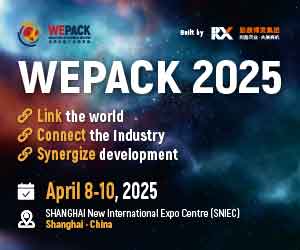With more than 50 years of experience in the self-adhesive label industry, CABAS Labels operates today with the same passion, meeting the needs of its clients for high-quality labels, who have classified it among the top printing companies in Greece and abroad. From its foundation in 1970 in a small space downtown Athens, Cabas has grown over time to a public limited company, expanding its facilities and supplying labels to some of the leading European companies, investing in up-to-date label printing equipment and in training and development of its employees.
Today, following its latest investments, CABAS Labels is able to provide complete label printing & converting services, utilizing Offset, Digital and Flexo technologies. Its 2 production facilities print high-quality labels for a wide range of food, beverage, pharma, and personal care products, and it provides a multitude of capabilities, such as Multilayer labels, Wrap around labels, reverse-printed labels, lamination, etc.
The company’s philosophy is to focus on the true needs of each project and cooperate with their clients, to give them the labels they want in guaranteed high quality. The company ensures this by monitoring global trends, investing in new technologies, testing new materials and techniques, and making sure to provide its customers with up-to-date and flexible solutions.
Panos Cabas, President of the company and son of its founder, Nikolaos Cabas, had a vision to significantly improve the company’s operational performance as the business grows by connecting people and equipment, bringing the company’s workflow under one system, as well as optimize their cost estimating process and cost management.
Improving operational performance
Before investing in Overprint MIS, the company had been using proprietary files for their cost estimating, which worked well up to a point. However, when the business grew and needed to incorporate a higher number of quotes resulting in a higher number of orders, and fewer print runs, it was evident that they needed to maintain more organizational features such as an efficient stock system, real-time data collection from production, and allow all employees to have a complete overview of the production. Optimizing for efficiency the work environment has provided the opportunity to process more orders while the company is growing every year.
Overprint’s Cost Estimation tool calculates in detail the different costs in varying quantities, through a Machine Learning algorithm, which uses actual historical data to calculate and forecast the optimum production proposal. A detailed cost analysis is provided with different cost estimations resulting in different quotes for varying quantities. The cost analysis will determine a production proposal for the technology yielding the most cost-effective production. Advanced features allow for accurate cost management since a user can review actual production costs and compare the results to the forecasted cost estimations.
Production planning is optimized within one main view, where production tasks are displayed with the calculated time estimations for completion. The time estimations are calculated based on parameterization, machine learning, and manual data entry. Machine Learning forecasting is based on actual historical production data and, no matter how complex, it provides the most accurate time estimations. Job prioritization and gain on preparation times are constantly re-calculated for improvement and provide optimum results regardless of last-minute changes in the product’s technical specifications or production-related issues.
Automate whatever can be automated
CABAS Labels wanted to automate whatever could be automated, to free up the team to do more beneficial and meaningful tasks. Digitizing all areas of the business and connecting them all provides everyone with an end-to-end view of the production status in one central access point. By automating production steps and processes, the workflow is organized and runs consistently the same way in every customer order. Overprint provides control points that enable the smooth run of production and workflow for approval of job tickets, processes, etc., eliminating bottlenecks and human errors.
In addition, CABAS has been incorporating the latest technology in digital print and converting equipment. Its latest investments, involving different workflows than traditional presses and converting machines, would also need to be incorporated into an MIS that could accommodate all product types and print technologies in a single, unified environment.
Data Collection for Business Intelligence
CABAS has connected the entire production space with data collection terminals, to collect and log valuable data in real-time, such as consumptions, idle times, maintenance intervals, etc. Using Overprint’s Control Center, communication and data logging was automated; therefore, the entire flow of information has provided reliable reporting, streamlined data logging for accounting, in turn reducing administrative tasks and increasing productivity.
All data collected across production stages can be consolidated and combined into dashboards, within Overprint’s Business Intelligence module. Advanced analytics provide the users a complete overview of the business, enable timely and accurate decision-making with meaningful metrics, and highlight trends and opportunities for improvement.
bel is with us every step of the way
“We evaluated the most well-known MIS systems before deciding on bel’s Overprint. What convinced us was its great ability to handle all our requirements regarding cost calculations, its production planning features, and the support the system can provide while our business grows. It is important to think further ahead of time and proactively plan all our next steps, and bel is with us every step of the way”, says Panos Cabas.
The benefits of using Overprint MIS became evident throughout the implementation process, during which the intuitive workflow of the system provided an easy learning curve and smooth incorporation of the order management and production requirements.

























